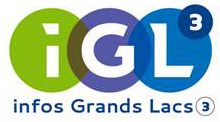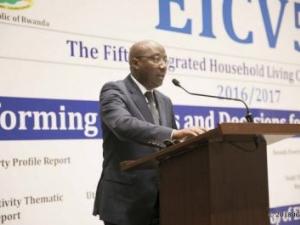Rwandans who are in poverty are those who are able to find food but cannot afford other necessities, such as schooling, family health care, clothing, entertainment, leisure, paying for rent, traveling, and other basic necessities in life and cannot earn Rwf 159, 375 per year.
Those in extreme poverty cannot afford a healthy diet rich in nutrients, as well as other important necessities in life and do not earn more than Rwf 105,064 a year.
Survey findings show that the number of poor people is 38.2% from 39.1% in the fourth survey released in 2013/14 and down from 44.9% in 2010/2011.
Rwandans in poverty reduced by 0.9%, while those in extreme poverty increased by 0.3% from 16% to 16.3%.
The Western Province has the biggest number of people in poverty at 47.1%, while those in extreme poverty are 21.6 percent.
The Northern Province has 42.3% as poor people, the Southern Province has 41.4%, the Eastern Province has 37.4% while the City of Kigali has 13.9%.
In the districts of the City of Kigali, poverty is below 15% while in districts like Nyamasheke, it is close to 70%.
Nyamasheke, Gisagara, Rulindo, Karongi, and Nyaruguru districts have biggest numbers of poor people. NISR’s director, Yusuf Murangwa said food-poverty is much pronounced.
"Seventy percent of the poverty is based on not being able to find something to eat and affording it. If we start with improving agriculture and solve food insecurity, that will be great. The remaining 30% of poverty is due to lack of other necessities such as houses, and clothing, among others. "
Murangwa said that in general, the lives of Rwandans are improving whether in a settlement, economic activities, access to electricity and technology, among others.
However, he recommended that there should be strategies to help cope with unusual times, particularly in the face of disasters and climate change.
It is also needed to strengthen the programs that help people to cope with the extraordinary times in a sustainable way, especially, those that threaten the economy and climate change.
Prime Minister Dr. Edouard Ngirente said that the survey is important because a comprehensive planning always needs reliable and current information to evaluate what has been done in terms of reducing poverty issues of poverty and in other development areas.
"What was revealed by EICV 5, shows us that we should double our efforts by working together with all our stakeholders to eradicate poverty. We should not keep doing the same things. This is up to the Government of Rwanda, all Rwandans, the private sector, partners in development and religious organizations,” he said.
Economic inequalities also reduced as shown by ’Gini’ indicator, from 0.447 in 2013/14 to 0.429 in 2016/2017.
NISR states that although there were no big changes in living conditions, some people left one category to a better one.
Why did the speed of poverty reduction decrease?
The statistics indicate that in 2000/2001 Rwandans in poverty were 58.9%, and in 2005/6, were 56.7%, in 2010/11 they were 44.9%, in 2013/14 they were 39.1% and 38.2% in 2016/2017.
It is for the first time that the poverty rate has decreased at a low rate of -0.9%. Murangwa explains that poverty has diminished so slightly that almost no change occurred.
"In 2016, we had a prolonged dry season in the second agricultural season, which had a bearing on agricultural production. This led to a decrease in foodstuffs and food commodity price rise in 2017,” he said.
It contributed to the decline in the citizen’s ability to buy and generally satisfy themselves in food.
He also noted that the low agricultural production affected the increase of Gross Domestic Product (GDP), which led to poor economic growth during the 2016/2017 budget year.
The study also revealed that about 82% of Rwandans are under 40 years of age, while 3.5% are aged 65 and above. Women are 52%, and the City of Kigali has the smallest number of women while the Northern Province has the biggest number of women.
Rwanda’s economy continued to rise in the last 10 years at 7.5%, while commerce rose by 23.9%, between 2014 and 2017 compared to between 2011 and 2014 when it had risen by 24.4%.
Jobs increased by 31% between 2014 and 2017, while between 2011 and 2014 they had increased by 34.5%.
Home internet users rose from 9% in 2014 to 17% in 2017.
The rate of people using electricity for lighting whether from main supplying sources or solar energy increased to 34.4% in 2016/2017.
Clean drinking water is estimated to be at 86%.
Mobile phone owners are 67% up from 64% in 2014 while Rwandans who own televisions are 10,4% up from 9.9% in 2014.
87.6% of Rwandan children attend primary school and 23.2% attend secondary schools.

